What I will explain below is how to approach link building for a new website and why this is different from building links to an already established web property.
In addition, I will give you some tips and examples on how to get featured on premium websites and get links that can make a difference in your SEO and rankings.
Why are links important?
Let’s start with the basics, why are links important? In simple words, links are important because they are part of the search engine ranking algorithms and can influence your ranking positions.
Websites with good quality incoming links are more likely to rank higher in the SERPS than websites with zero or fewer links.
This association of links and rankings was first introduced by Larry Page and Sergey Brin (Google Founders) when they wrote the initial Google ranking algorithm in the late 1990s. Their idea was that websites that are referenced (linked) from other websites on the Web, are more important and thus deserve to rank higher in the search results.
Of course, things have changed a lot since then and a lot more factors are taken into account when calculating the ranking position of a page for a given keyword, but links still have a very important role to play.
The graph below is from a recent study by Brian Dean that shows the relationship between incoming links from different domains and rankings.
It is clear that websites with links from a number of different domains rank in the top positions of Google. As we will see below, it’s not only a numbers game i.e. the website with more links does not rank higher but it’s also a matter where these links are coming from.
What is a good link?
Many beginners to SEO have a difficult time understanding the difference between a bad link and a good link. Not all links are equal.
A link from a non-trusted website or a paid link is more likely to get your website into trouble. It is a violation of the Google webmaster guidelines and it will most probably give you a Google penalty (more on this below), which makes things worse and even more difficult.
The way the Google ranking algorithm was initially built, was vulnerable to manipulation.
When webmasters realized that rankings can change depending on the number of links pointing to a domain, they started to artificially build links from any type of website (web directories, forums, article directories, etc.), in an effort to improve their rankings and it worked!
This unfair behavior created problems for Google since the quality of their search results was negatively affected. Google’s focus was (and still is) on making their users happy by returning good quality websites for a search query.
Their response was to change their ranking algorithms not only to keep ‘spam’ websites out of their index but to also penalize websites that tried to manipulate it by artificially building links. This is known in the industry as the Penguin and Panda updates.
So, what is a good link that can help your rankings?
A good link has the following characteristics:
- It’s coming from a related website.
- It was not paid or part of a link exchange scheme.
- It is usually hard to get.
- It’s coming from a high authority website trusted by Google.
- It appears in the main body of a page (not sidebar or footer).
- It does not have the ‘nofollow’ tag.
Any link that does not fall into these categories (one or more), it’s considered a bad link. If you have a lot of bad links pointing to your website, this will most probably raise a flag in the algorithm and a manual action or algorithmic action may be imposed – resulting in losing your rankings and Google trust.
Natural link building Vs Black hat link building
Before getting into the details on how you can get good links for your website or blog, it is necessary to talk about natural link building and black hat link building techniques.
What is natural link building?
Natural link building is when a website owner or blogger, adds a link to their website that points to your website because they believe it will enhance their user experience. In other words, they add the link because it adds value to their content.
For example, Neil Patel (a famous Internet Marketer), recently linked to one of my articles because it added extra information to support his own article. I did the same here now because I think it’s useful for you to get to know Neil and his work.
I did not ask for that link; neither did I pay for it but it was the result of someone else linking naturally to my website because they thought it was good for their users.
What is black hat link building?
Links that are paid or are a result of link exchanges (you link to my website and I link to yours) or links added to websites for the sole purpose of passing link juice from one website to another are the result of ‘black hat link building’.
Does this mean that asking for links is considered black hat? No, not at all. It is acceptable to approach other people and ask them to link to your website BUT they should do it without a return and only when they believe that a link will add value to their content.
A thin line separates white-hat and black-hat link building in that manner but as you will read below, there are ways to stay on the white-hat part without worrying about crossing the line.
How to approach link Building?
Now that all the terminology has been sorted out, let’s see how you can approach the link building process for a brand new website and for an already established site.
For the purpose of this article, a brand new website is less than 12 months old (the domain age) and has less than 20 pages of content in the Google index. An established website has been online for more than a year and has more content in the index.
Link building for a new website
The link building process for a new website is the same as an established website (as you will read below) but with these differences:
Search engine algorithms are ‘trained’ to look for patterns when accessing the quality of a link or website. In a normal scenario, a website that is new with not much content is less likely to be worthy of links from other websites.
That of course excludes cases of websites that go rival and become popular very quickly; in the majority of cases, new websites do not get noticed until they have enough content and ‘grow older’ in age.
This means that if your new website gets a lot of links in the early stages, this is against the normal pattern and it may raise some flags.
So, if you have a new website, don’t start emailing people asking for links or trying to over-promote your work. Concentrate first on building a great website with good quality content that is worth linking to.
What you can do to get some links is the following:
- Use linkedin long form posts: Write an article related to your topic and publish it on LinkedIn. In the article add a link to your website. Although this is a ‘nofollow’ link, it’s a good starting point.
- Join related LinkedIn groups and share your insights and experiences about the discussed topics. Add a link to your website only when it’s relevant and helpful to the readers.
- Create an account with crunchbase and register your company. This is how my entry looks like.
- Create a Facebook business page, Twitter account, Pinterest, Instagram, and link back to your website. Make sure that your profiles on those pages are correctly optimized. Read this on how to SEO your social media profiles.
- Submit some of your best posts to well-known directories like inbound.org and try to be active in those communities.
- Answer questions in quora and try to help other people.
- Provide valuable comments on other related high authority websites (see an example of my comment on quicksprout.com).
- Publish an article on medium.com
In general, at this stage try to concentrate on creating links that help in establishing your website’s identity online and start building your reputation as someone (website or person), that is willing to help other people by answering their questions or providing suggestions on how to solve their problems.
Link building for an established website
As your website grows in age and in content and provided that you gone through the ‘basic link building’ as described above, you can now move to more aggressive tactics to enforce your natural link building process. These tactics have to do with positioning your content in front of the people that are more likely to naturally link to it.
There are three effective ways to do this, the first one is through paid social media campaigns, the second one through email outreach, and the third one through guest posting.
Social media campaigns for link building
Before explaining the details, it is important to understand that your goal with the social media campaigns at this stage, is NOT to attract customers or make sales but to get the attention of people that are likely to link to your website.
This is different than a normal social media campaign where your goal is to increase your followers and get more visits to your website and make sales.
So, before deciding which platform to use (Facebook, Twitter, Instagram, etc.) it is necessary to do some homework and identify the group of people you want to target with your ads, that are more likely to find your content interesting and link to it.
For example, let’s say that you have a website selling engagement rings and other jewelry online. You need to think about what kind of people/websites would be interested in your products not for buying them but for references on their websites.
The answer in this case is photography bloggers, wedding websites, wedding organizers, wedding photographers etc. These people are writing about ‘engagement’ related topics and can easily link to a ring or product if they find it interesting.
The next step is to translate the above findings into paid ad campaigns on Facebook, Twitter, Instagram and other networks that offer paid advertising opportunities.
Facebook is obviously the first choice and a platform that works really well for these kind of campaigns because it allows you to narrow down your audience based on their interests, location, and other demographic characteristics.
What to include in your ads?
While I will not go through the process of setting up the campaigns, you can follow these instructions, it is necessary to bring your attention to another important aspect, the ad copy.
Normally when you run a campaign your ad includes things like price, offers, advantages but in this case you need to pass a different message to grab the attention of other webmasters.
In our example above, the ad copy for the engagement rings social media campaign for links can include the characteristics of a product and other information that would be useful for other publishers. To find out exactly what to include you can do some further research and analyze published posts and see how they are linking to a product and what information they are using.
It’s not a straightforward task, it needs some preparation work but it’s a good way to get your content in front of the people that can influence your rankings.
Retargeting
Retargeting allows you to reach people through advertising that have already visited your website. This is also a good method since your campaign audience are people that already know about your website and retargeting is a good opportunity to remind them about your content.
Facebook has many options related to retargeting and also does Twitter and Adroll. For retargeting to work you need to add some scripts to your website so that these networks can track visits but it’s easy to set up if you follow their instructions.
Last but not least, you should also enable retargeting in Google analytics so that you can use the created audiences to launch retargeting campaigns on Google search and Google display network through Google Adwords.
Email outreach
Link building works best if you are able to make connections with other bloggers and email is one of the most efficient ways to do that.
Obviously, before start sending emails, you need to know who to email and this needs a bit of work.
You need to create a list of people that you want to contact and then try to find their email address or a way to contact them. I found that Twitter is the easiest way to do this.
Everybody has a Twitter account and this can be your starting point. Retweeting / mentioning them in your tweets is a good way to get their attention and this increases your chances of reading your email.
A few important pointers to consider when using email for link building purposes.
Don’t send massive emails – I get tens of canned emails per day and I just delete them. Make your emails personal and try to build a conversation with the other person without asking for anything.
Don’t overdo it – Email them only when you have something really great to share and not every time you publish a new post.
Give them the benefits – In your emails, explain to them why your blog, article, the product is a good fit for their audience but try to keep your email short and to the point.
Give before you ask – If you want to build connections with a blogger, don’t do it because you will get a benefit but also show that you are willing to help them too. For example, if you find an article published by someone else that is worth linking to, add a link to your website and then let them know by email that you did that.
Here is an example of an email I have sent to a fellow blogger.
Guest posting
Another powerful way to promote your website and build more links is through guest posting. Many websites accept ‘guest posts’ from other authors and in return they allow the guest authors to enter their contact details at the bottom of the article (including a couple of links to their websites).
While this is a perfectly acceptable method to promote your work, in recent years a lot of people tried to use guest posting the wrong way and so Google became stricter on the way they value links in guest posts.
To avoid any troubles, make sure that you follow the simple guidelines below:
- Guest post only on related websites. A link from a related website is good while a link from a website that has nothing to do with your website is of no value.
- Guest post on high-quality websites. There are many websites that accept guest posts and have no original content of their own. These are not good candidates since they are considered low value and sometimes spam.
- Guest post on websites that have strict publishing policies. The harder is to get accepted to a website the better. This means that they have guidelines and policies to keep spammers away.
- Don’t add links with optimized anchor text. In the past, it was important to have keywords in links but since Panda and Penguin, this is penalized by Google. When adding a link to your website either in the body of an article or author bio, don’t over-optimize This is the opposite with internal links.
How to get strong links from premium websites
The above methods are great ways to approach link building but another more efficient way to get those good links described above is to get published on premium websites. This will not only give you strong links that can make a difference in your rankings but it can also help in been recognized as an expert in your niche.
What are premium websites? Premium websites have huge amounts of traffic, are loaded with useful and quality content and are recognized as leaders in the niche. For example, in the SEO industry websites like searchengineland, quicksprout, moz, content marketing institute, copyblogger etc. fall in the above category.
Your first step is to create a list of these websites. Search Google, Facebook, Twitter and find out the websites that are considered the best in your industry.
Carefully examine their content and take note of the authors. If they have a lot of authors, then most probably they accept guest posts so search to find their guest posting guidelines and read them carefully. If not, you can either skip that website or try to contact them anyway explaining what you can offer them.
Follow their instructions precisely and get in touch with them by taking into account the following:
Big websites get a lot of requests on a daily basis and it may take them a couple of months to even reply to your request.
Keep your email short and give them the information they need. If they ask for proposed topics, give them suggestions, if they want to see the final result in Word format, give them that.
Don’t be afraid of rejection. Depending on the niche, competition, your experience and expertise, some websites may reject your application but that’s normal to happen. Don’t give up but try with the next one.
Start low aim high. When you create your list, order the websites in such a way so that really big websites are on the top of the list. Start with the bottom of the list and build your way up. Getting published on some websites at first will make it easier to get on the most difficult ones. You will gain the experience of the process and you will have more references (published articles) to share as you climb the list.
Don’t be greedy. The only reason that premium websites may accept your content is that you have something interesting to share with their audience and not for link building purposes.
In the majority of cases, you get a link in the author bio at the bottom of the article. Some websites allow you to add a link in the content of the page if it is highly relevant and valuable but don’t be too greedy as if you make them believe that you are doing this for link building your article will not be published.
Here is an example of one of my articles published on contentmarketinginstiute.com, one of the leading websites in the areas on content marketing.
Conclusion
How much time to spend on link building VS working on your website?
Link building is a huge topic and what I described above is just the tip of the iceberg. I know from my experience that website owners face a big dilemma as to where to spend their time, on growing their website’s content or on link building activities.
Both tasks are important but if you have to allocate your limited time wisely then devote more time to building your website and less time on link building.
Having a great website with lots of high-quality content will make it easier to get natural links in the future without having to spend any time pursuing links.


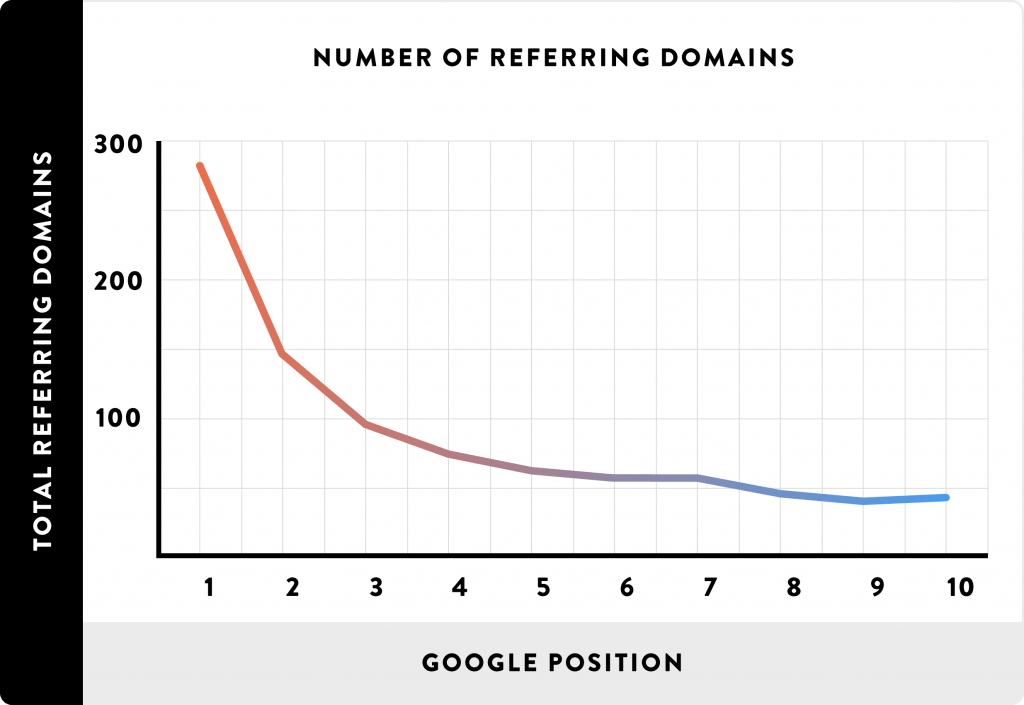
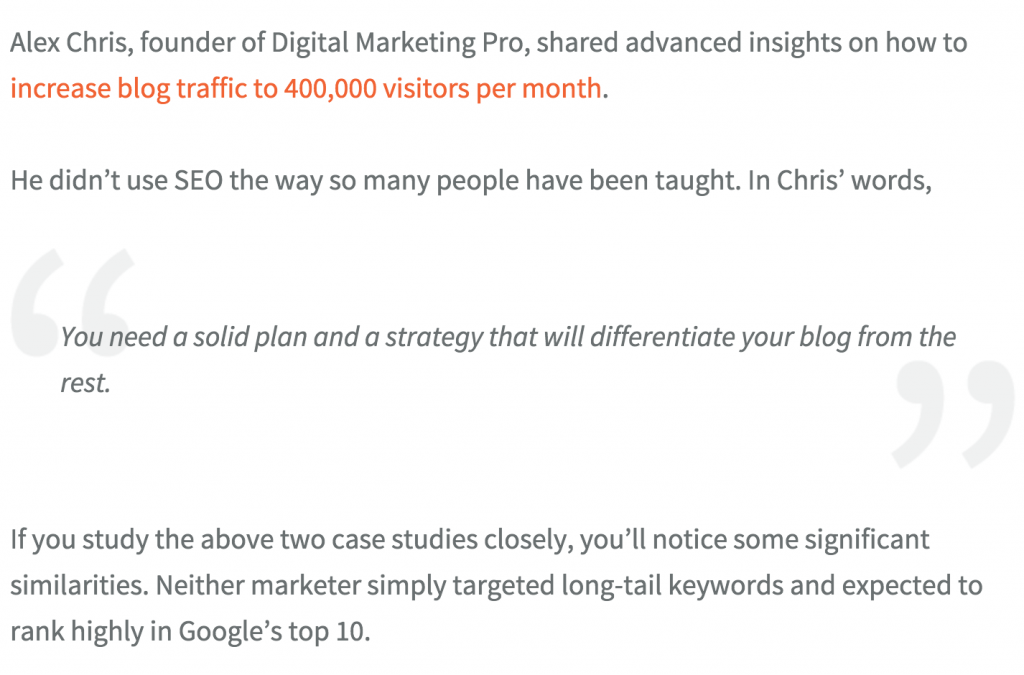
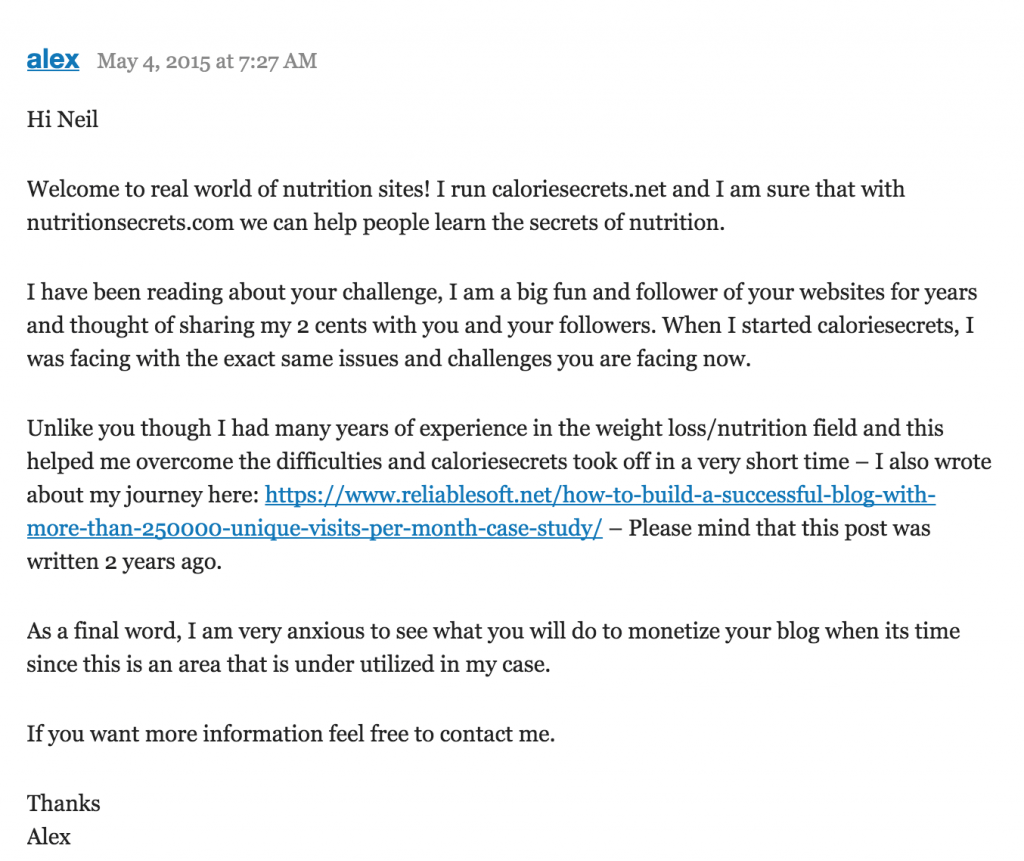
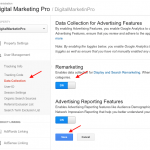
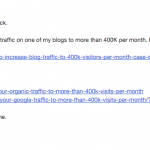




Thanks for share this informative article.
Thanks Virender, glad you found it useful.
Alex